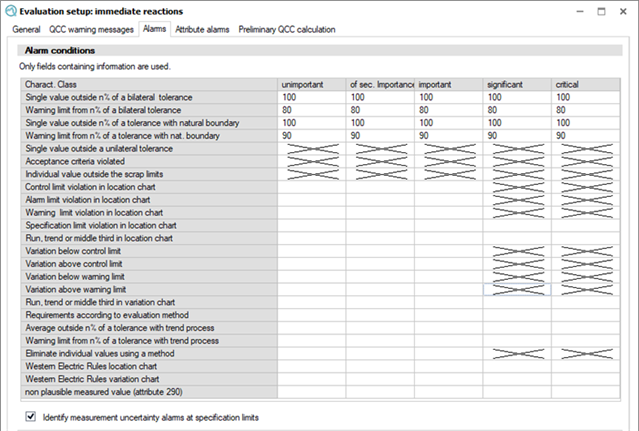There are a number of considerations to be made before embarking on an SPC system. This topic is in no way a substitute for the workshop itself. It is intended to give an idea of the issues that need to be considered and how these issues can be put into practice.
- Who is allowed to save a QCC?
- Who is allowed to change the QCC parameters?
- What data should be used to calculate the QCC?
- What QCC information is useful for data recording?
- What needs to be brought to the user's attention (alarm) in order to correct the process?
Table of Contents
Permission to save the QCC
Users who are not allowed to save QCCs should not be allowed to modify test plans. This is controlled by the "Edit test plan" user group option in the user management.
<File> | <Configurations> | <User management> | <Edit>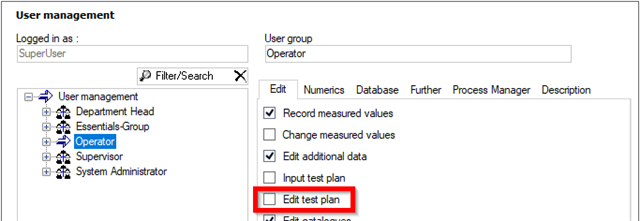
Permission to change the QCC parameters
The ability to intercept changes to the parameters of the various QCCs is controlled by user management. In addition to saving a QCC, a user can also be allowed to change the QCC parameters. However, this user group right should only be granted to users who have been trained in the theory of using control charts. Without training in SPC, this user group right should not be granted.
<File> | <Configurations> | <User management> | <Numerics>![]()
Data selection for QCC calculation
It may be necessary to prepare the data set. Select the measured values for the QCC calculation and trigger an alarm if necessary.
When looking at a dataset immediately after loading it from the database, it is often the case that there are outliers or even jumps in values. A systematic shift of the target (Verschiebung der Mittellage - Verschiebung eventl. relocation) is given. The QCC can also be used to detect or alarm on these.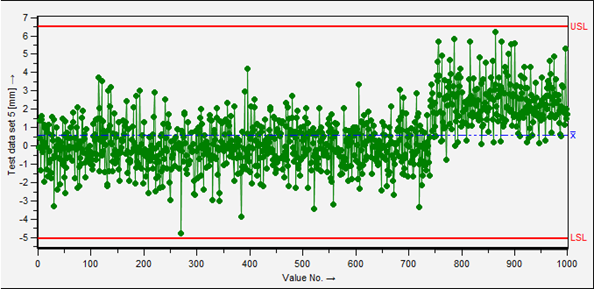
The data set can be modified by using the select function to remove all values that should not be included in the calculation of the QCC.
Note: Selecting data is only available to users with the "Selection in graphics" user group right.
With selected values, the data set could look like the one below. Measured values that have been removed due to selection are shown with a dashed line.
It is not necessary to save the data set. The data selection only needs to be temporary. It is sufficient to create a Saved QCC and save it to the data set.
With a clearly defined evaluation strategy, there is no need to customise additional QCC parameters. In the case described here, the QCC calculation follows the QCC parameters configured in the evaluation strategy and includes the data selection of the "excluded" measured values to calculate the QCC limits. QCC parameters saved in a dataset (Saved QCC), can then be used to calculate QCC in e.g. O-QIS during data recording and also for alarming. 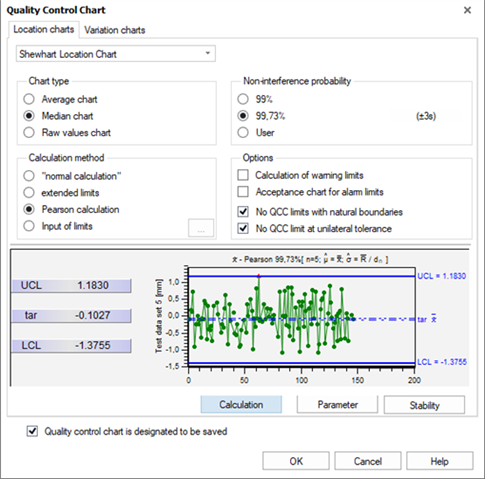
Looking at the data set again after reloading all measured values, the Saved QCC shows when the user would have been alerted by the QCC control limit violations.
Presentation of the QCC information
Displaying the QCC information during the data recording is the first step to get into SPC. It is important to define which violations should be displayed to the user. Only the stability violations or also the individual values.
The graphical display precedes the output of "alarms" to the user. In many projects this is the start before the actual alarm output. This allows users of the O-QIS to be slowly introduced to the subject of SPC. The graphical setup of the QCC is described in the FAQ series of graphics, here are just a few notes.
Start by observing the Online QRK.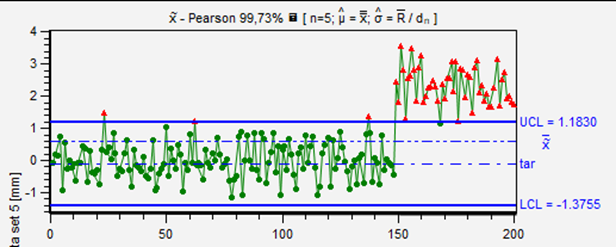
Depending on the amount of data, the user can be shown the individual values around the plotted averages. This also visually shows the user that a “violation of the QCC limits” of an individual measurement value does not constitute an alarm. In the default delivery (evaluation strategy ?), the average or median is alarmed.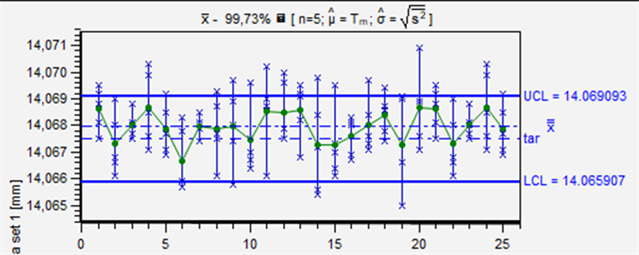
The variation charts must always be displayed next to the location chart! Even if this can be graphically disabled. A QCC always consists of the location and variation charts.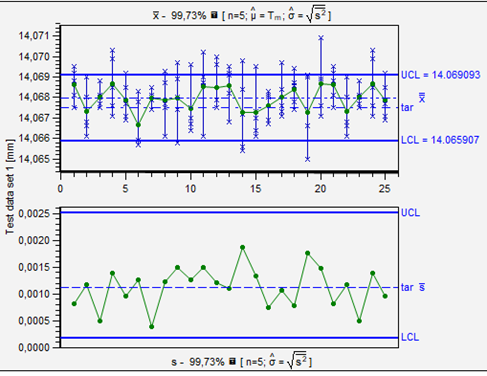
Various symbols can be used to indicate to the user whether an alarm has occurred, and even whether single value alarms have occurred.
Alarm for data recording
In the final stage, when users are familiar with the QCC information, it is important to consider alarms. Careful consideration should be given to what should be displayed as an alarm to the user, thus triggering forced action to adjust the process.
For example, it should be considered which characteristic classes trigger QCC alarms and which alarms should only be displayed graphically.